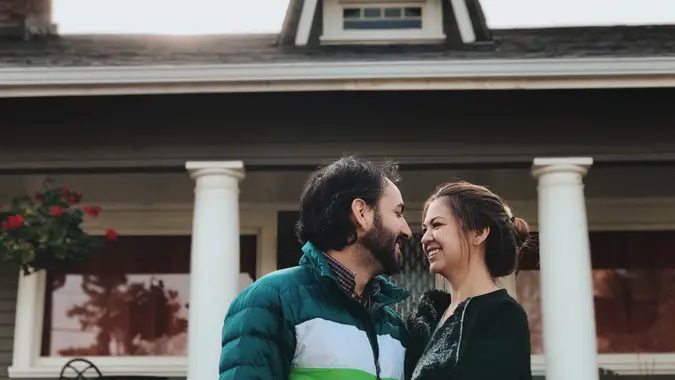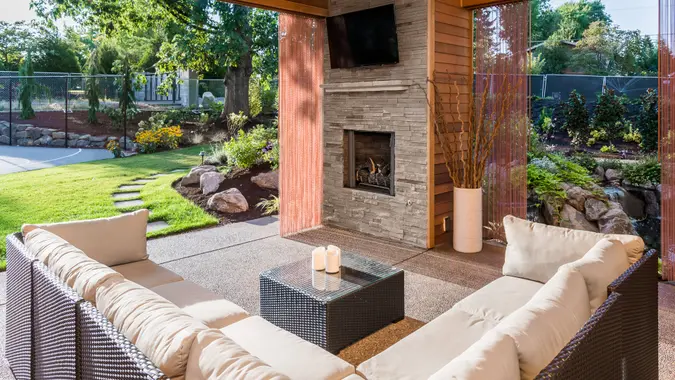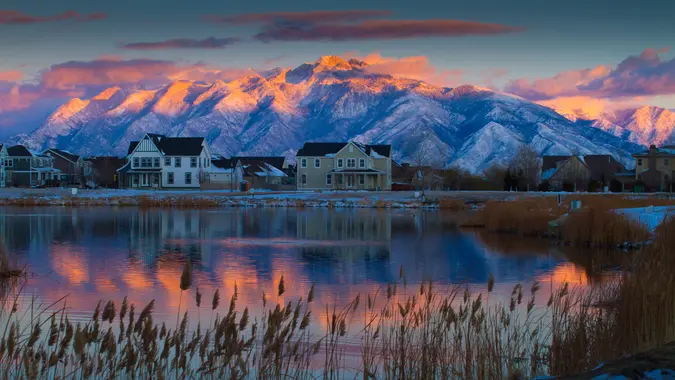These 15 Suburbs Now Have More Renters Than Homeowners — What’s Driving the Shift?

Commitment to Our Readers
GOBankingRates' editorial team is committed to bringing you unbiased reviews and information. We use data-driven methodologies to evaluate financial products and services - our reviews and ratings are not influenced by advertisers. You can read more about our editorial guidelines and our products and services review methodology.

20 Years
Helping You Live Richer

Reviewed
by Experts

Trusted by
Millions of Readers
Buying a home in the suburbs has long been a part of the American dream because it gives you an affordable place to live (and own) with a lot more room than you would find in big cities. But that’s changing in many suburban communities — or at least the homeownership part, anyway.
A large number of U.S. suburbs have more renters than homeowners, according to a new study from Point2Homes. The trend has been driven by several factors, including record-high home prices, changing lifestyles and a desire for more mobility.
Between 2018 and 2023, the number of renter households increased faster in the suburbs than the main city in five of the 20 largest U.S. metros — including Dallas and Miami. During the same period, 15 suburbs switched from owner-majority to renter-majority.
Suburban Renters Swell by 231,000
An estimated 203 suburbs nationwide currently have more renter households than owner households. That number is actually down from 233 in 2018. But as Point2Homes pointed out, the figure “remains high” considering that suburbs have traditionally been “oases of homeownership” away from the renter-majority urban spaces.
Today, around 6.08 million households rent a suburban home in the areas Point2Homes analyzed — an increase of around 231,000 since 2018. In 15 suburbs, the number of renter households more than doubled between 2018 and 2023.
For its study, Point2Homes researched the 20 largest U.S. metros by population as well as suburbs with at least 10,000 residents. It then analyzed U.S. Census Bureau data to identify suburbs and its own internal data on rentals nationwide.
Which 15 Suburbs Have Flipped Toward Renter Majority?
Here’s a look at 15 suburbs that flipped from owner majority to renter majority in the space of five years:
| Suburb | Renter Share 2018 | Renter Share 2023 |
| Bound Brook, New Jersey | 49.9% | 58.2% |
| Leisure City, Florida | 46.6% | 54.7% |
| Brookline, Massachusetts | 49.5% | 53.9% |
| Farmers Branch, Texas | 47.1% | 53.9% |
| North Arlington, New Jersey | 47.9% | 53.6% |
| Lauderdale Lakes, Florida | 45.9% | 52.8% |
| Gary, Indiana | 48.7% | 52.6% |
| East Franklin, New Jersey | 42.4% | 52.1% |
| King of Prussia, Pennsylvania | 41.1% | 52.0% |
| St. Cloud, Minnesota | 48.3% | 51.4% |
| Watertown, Massachusetts | 48.0% | 51.2% |
| Blue Island, Illinois | 49.1% | 50.9% |
| Secaucus, New Jersey | 42.2% | 50.7% |
| Sumner, Washington | 48.9% | 50.2% |
| Garrison, Maryland | 47.8% | 50.1% |
‘Affordability Gap’
In a December 2024 report, CBRE noted that a “significant affordability gap” has driven a growing number of Americans to choose renting over homeownership. At the time of the report, average monthly mortgage payments for new homes were 35% higher than average apartment rents. Even when (and if) home prices moderate, CBRE expects continued growth in the rental market.
Another trend driving the shift is that developers are moving their attention away from downtowns, urban cores and main cities, according to Point2Homes. Many are now focused on “expanding outwards” toward towns and suburbs surrounding big cities, with the aim of giving renters with more space and better amenities.
More From GOBankingRates
 Written by
Written by  Edited by
Edited by 

























